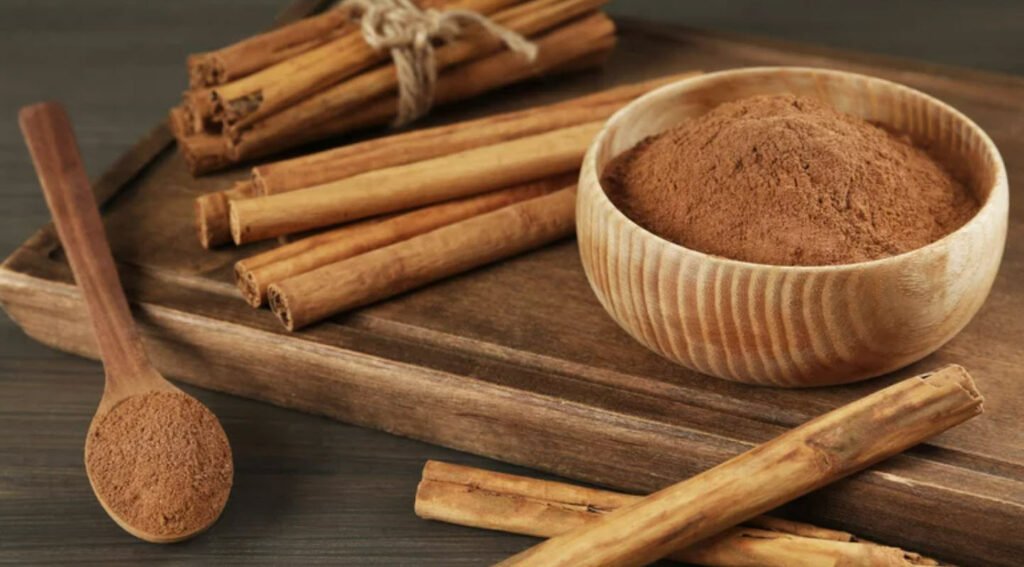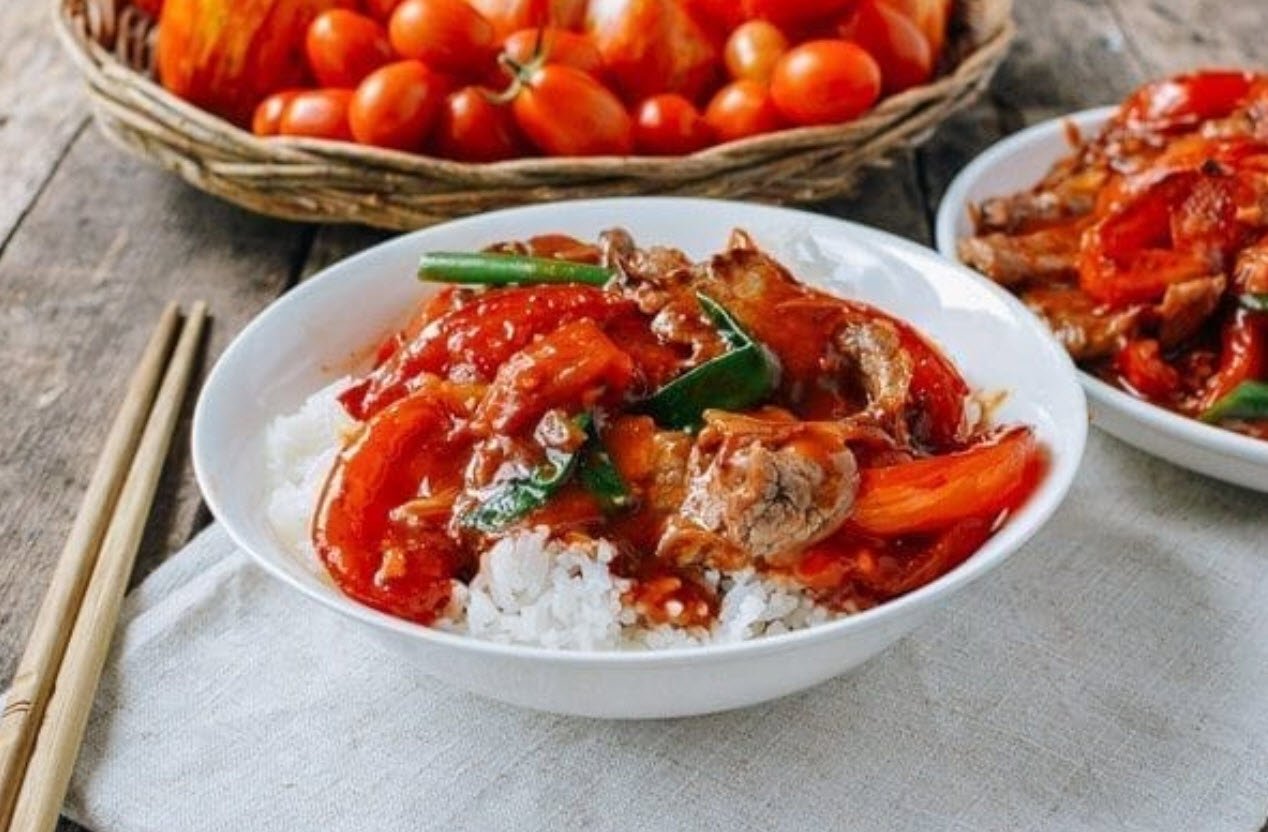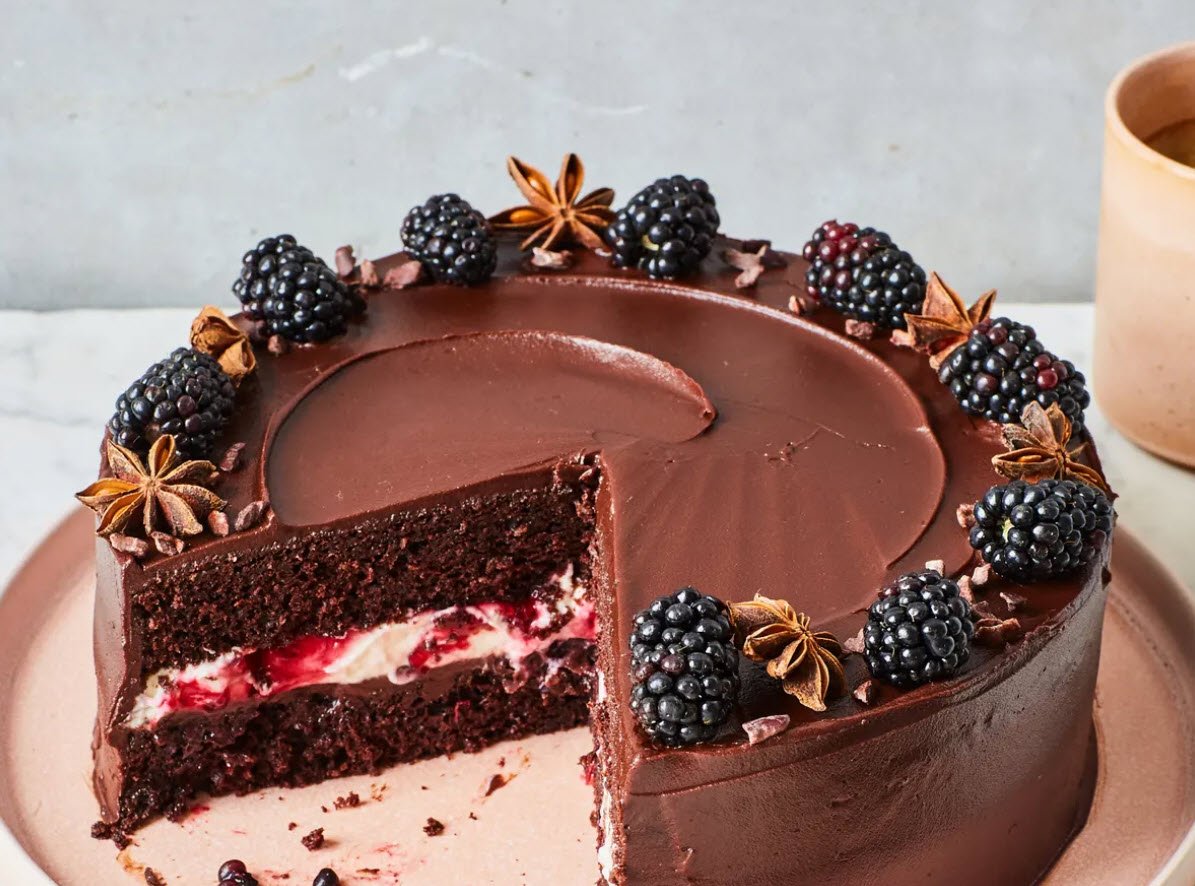
Cinnamon is so often enjoyed in pastries that it might be hard to believe this spice does more than taste good in desserts. Don’t be fooled! Cinnamon may be one of the best herbs for improving many common chronic illnesses.
It powerfully supports metabolic function, making it an important herb to use alongside diet, exercise, and stress reduction to address the growing epidemic of insulin resistance and type 2 diabetes.
| Botanical name: | Cinnamomum cassia (syn. Cinnamomum aromaticum), Cinnamomum verum (syn. Cinnamomum zeylanicum) |
| Family: | Lauraceae |
| Parts used: | bark (prepared as sticks, chips, powder, or essential oil), twigs, dried flowers |
| Energetic: | warming, drying |
| Taste: | pungent, sweet |
| Plant properties: | aromatic stimulant, warming, demulcent, sweet, astringent, analgesic, hypoglycemic, antioxidant, antimicrobial |
| Plant uses: | toothache, diarrhea, blood movement, infections, arthritis, insulin resistance, colds/flu |
| Plant preparations: | tea, tincture, culinary, tooth powder |
The rich history of this aromatic spice reaches at least as far back as 2700 B.C.E., when it was first written about in Chinese texts. In the Bible, Moses is told to make holy anointing oil using two different kinds of cinnamon. The ancient Egyptians used cinnamon not only to flavor food but also in the embalming process.
Nowadays, if given the choice between a bag of cinnamon or a bag of silver, you’d likely take the silver without a second thought. Roughly 2,000 years ago, the opposite would have been true!
Earlier, Pliny the Elder described cinnamon as having times the value of silver by weight. For centuries, the cinnamon trade was tightly controlled by Arab merchants, who wove fantastical stories regarding its origin and cultivation in order to enhance the magic surrounding this exotic spice and keep prices high. The European entrance into the cinnamon trade began in the 16th century, sparking a violent, centuries-long struggle as countries fought over control of cinnamon plantations.
Also Read: [Recipe] Flaky, Buttery Gluten Free Biscuits
Cultivation methods for cinnamon trees have been passed down for centuries and remain mostly unchanged to this day. Plantation trees are heavily pruned when they are two years old.
This pruning creates a lot of bushy shoots at the base of the tree. These shoots are harvested about twice a year, after heavy monsoon rain makes them easier to process. Then the hard work begins by separating the inner bark of each shoot from the rest of the stalk.
Layers of this inner bark are pressed together and then laid out to dry, and during this time the bark curls to form cinnamon “sticks,” also called cinnamon quills. After they are properly dried, they are cut to size and shipped around the world.
Types of Cinnamon
There are more than 100 varieties of cinnamon trees, but there are two main species that are commercially available.
- Cinnamomum cassia (cassia cinnamon) is the one you are most likely to encounter on spice shelves in stores across the United States. This cinnamon is native to Indonesia and now grows in tropical climates around the world.
- Cinnamomum verum is commonly called Ceylon cinnamon. Grown in Sri Lanka, some parts of the world consider it “true” cinnamon.
What’s the difference between the two? As far as taste is concerned, Ceylon cinnamon has a sweeter and lighter flavor, while cassia is spicier and more pungent. Chefs often prefer cassia for savory dishes such as meats and soups, and Ceylon cinnamon for desserts. In herbal medicine, the two species are used similarly.
Medicinal Properties and Energetics of Cinnamon
Herbalist Matthew Wood beautifully describes cinnamon in relationship to its energetics and taste: “Cinnamon is warm and stimulating so it tends to warm up the digestion and the interior, but it is also sweet and astringent so it nourishes and tones.”
Cinnamon can ease many digestive complaints, including indigestion, gas, and cramping. It is a common ingredient in chai (tea) blends, which are traditionally drunk after a meal to help with digestion. It’s a favorite herb to give to children with diarrhea because it is antimicrobial, tastes good, and gently improves intestinal tone to avoid dehydration.
1) For Fever
Feeling cold? Feeling hot and cold? Cinnamon mildly thins the blood and can be used to increase general circulation, bringing warmth to cold hands and feet. It can also be used in acute situations, such as a cold or flu in which a person is shivering and feels cold.
Herbalist Lesley Tierra says that “cinnamon bark also leads the body’s metabolic fires back to their source, alleviating symptoms of a hot upper body and cold lower body, such as a flushed face, wheezing, severe sweating, weak and cold lower extremities and diarrhea.”
Herbalist jim McDonald recommends cinnamon for fevers when the body externally feels cold and clammy but there is copious sweating, as well as diarrhea. This makes cinnamon an ideal herb because it warms the outer body, stops excessive sweating, and tones the intestines.

2) For Healthy Teeth
AND GUMS Cinnamon has numerous benefits for healthy gums and teeth. When used as a diluted essential oil, cinnamon can alleviate toothaches. You can also use cinnamon powder as a toothpaste to maintain healthy teeth and gums.
Because cinnamon tones tissues and is antimicrobial, it can decrease harmful bacteria levels in the mouth.
Herbalist Anne McIntyre elaborates: “The volatile oil in cinnamon is one of the strongest natural antiseptics known. Its antimicrobial properties make it an excellent medicine to prevent and resolve a whole range of infections.”
3) For Insulin resistance and Type 2 Diabetes
In 2012 just under 10 percent of the population in the United States had type 2 diabetes, and researchers have found that as many as 30 percent of those in this country have prediabetes or insulin resistance.
5 Millions of people with diabetes and prediabetes are unaware of their condition, and it is affecting people at a younger and younger age. Complications include amputation, heart disease, renal failure, and death. There are many causes and factors contributing to type 2 diabetes.
Cinnamon has been studied extensively, and numerous clinical studies have shown that cinnamon, notably Cinnamomum cassia, can dramatically decrease glucose levels and insulin levels. In a randomized, placebo-controlled, double-blind clinical trial, researchers gave people with poorly controlled type 2 diabetes 2 grams of cinnamon daily for 12 weeks.
After 12 weeks, those taking the cinnamon had significantly lower HA1c (a marker that shows average blood glucose levels over time) and lower blood pressure. The researchers concluded, “Cinnamon supplementation could be considered as an additional dietary supplement option to regulate blood glucose and blood pressure levels along with conventional medications to treat type 2 diabetes mellitus.”
In another study, cinnamon dramatically improved both glucose and cholesterol levels in adults with type 2 diabetes. The researchers concluded that the results of the study “suggest that the inclusion of cinnamon in the diet of people with type 2 diabetes will reduce risk factors associated with diabetes and cardiovascular diseases.”
But you don’t have to have insulin resistance or type 2 diabetes to get benefits from cinnamon. Research has shown that taking 3 grams of cinnamon with meals improves metabolic function, thus decreasing your risk of this chronic disease.
How to use Cinnamon
The easiest way to take cinnamon is in your food! While most of us are familiar with using cinnamon in sweet recipes, it also goes well in savory dishes such as chili, or on meats. Cinnamon makes a great tea and is commonly added to tea blends.
Suggested Read: 9 Best Vegetable Recipes You Need to Try in 2023
While not native to Mexico, this country has popularized mixing chocolate with cinnamon, which is commonly called Mexican chocolate.
Recommended Amounts
Cinnamon can be enjoyed in small amounts in order to flavor food or sweets. The therapeutic amount for cinnamon is 1 to 6 grams per day.
Special Considerations
Cinnamon shouldn’t be taken in large amounts during pregnancy. Cinnamon can also significantly lower blood glucose levels. While this can be a positive side effect, people with type 2 diabetes should monitor their insulin levels closely if they wish to take this herb regularly. Cinnamon is an effective blood thinner. It is not advised to take therapeutic doses (i.e., more than common culinary amounts) of cinnamon when taking pharmaceutical blood thinners.
1) Cinnamon Tooth Powder
Brushing your teeth with powdered herbs may sound strange, but this was common long before we had toothpaste. The powder will not foam, but it will make your teeth feel clean and smooth while supporting the health of your gums. Avoid getting drops of water into your powder, as adding moisture may shorten its shelf life.
Yield: 2½ tablespoons, which should last a couple of months with regular use
- 2 tablespoons cinnamon powder
- 1 teaspoon activated charcoal
- 1 teaspoon licorice root powder
Blend all the ingredients together and store in a small container with a lid. For best results, discard whatever you don’t use within 6 months and make another batch with fresh ingredients.

To use: Wet your toothbrush. Then, using a small spoon, heap a small mound of powder onto the toothbrush. Lightly brush your teeth as you would with a toothpaste.
2) Cinnamon Tea for Soothing Throats
This recipe was inspired by one of our favorite bagged teas, Throat Coat by Traditional Medicinals.
We use it whenever we have a painful throat, whether from an illness or from a long day of teaching. We also recommend making up a large batch and keeping it in a thermos. That way you can sip it hot throughout the day.
This tea contains slippery elm bark, and populations of this tree have been challenged by disease and habitat loss. Buy only sustainably harvested slippery elm bark, and if you can’t find an ethical source for slippery elm, then omit it from the recipe and increase the marshmallow root. Because many of the herbs in this recipe are oddly shaped, it’s best to measure these by weight rather than volume.
Yield: approximately 1½ cups (1 serving)
- 10 grams dried slippery elm bark
- 10 grams dried marshmallow root
- 8 grams dried cinnamon chips (or 1½ whole cinnamon quills broken into small pieces)
- 5 grams dried orange peel*
- 3 whole cloves honey, to taste (optional)
Simmer all the ingredients with 3 cups of water for 20 minutes. Strain off the herbs. Add honey if desired. Sip as needed throughout the day. Drink within 36 hours.
*Store-bought dried orange peel comes in small, uniform pieces. If you make your own, be sure to mince the orange peels finely before drying them, as they are difficult to cut once dried.
You may also read: 10 Best Salad Recipes You Can Make Fast
3) Chia Seed Pudding with Cinnamon-Maple Syrup
Chia seeds are nutritious seeds that thicken when soaked in liquid, creating a pudding similar to tapioca. We love this as a simple dessert. It also makes a great breakfast, especially topped with fresh fruit. It may seem strange to put the syrup in the bottom of the glass, but as you pour the chia seeds on top, the syrup naturally folds in throughout the glass.
Yield: 4 cups, or 4 servings
For the pudding:
- ⅓ cup chia seeds
- 1 (13.5-oz.) can coconut milk
- 7/8 cup plain yogurt
For the syrup:
- 2 tablespoons butter or coconut oil
- 1 teaspoon cinnamon powder
- ¼ teaspoon ground cardamom
- ¼ cup maple syrup
Making:
- To make the pudding: Mix together the chia seeds, coconut milk, yogurt, and 7/8 cup water in a medium size glass container with a lid. (When measuring out the yogurt and water, you can actually use the empty coconut milk can. Just measure out ½ can of each.)
- Let sit, covered, in the fridge for 3 to 5 hours or overnight. When done it should have a thick, pudding like consistency.
- Store in the fridge and eat within 48 hours.
- To make the syrup: Melt the butter or oil in a small saucepan. Add the cinnamon and cardamom and blend. Add the maple syrup and stir to blend.
- Pour equal amounts of syrup into four small jars or cups. Fill the cups with chia seed pudding (the syrup will naturally layer as you add the pudding) and enjoy.
- Spicy Hot Chicken with Basil – A Flavorful Fusion Delight
- Tomato Beef – A Symphony of Flavors in Every Bite
- Star Anise Chocolate Cake – A Decadent Dessert
- Zucchini Noodles with Spinach Pesto – A Heart-Healthy Twist
- Fruit Steel-Cut Oats – A Nutritious and Delicious Breakfast
- Rice & Mango Breakfast – A Quick and Nutritious Start to Your Day
- Heart-Healthy Tuna Salad Delight
- Elegant Tea Party Peach Melba Cakes – A Delightful Indulgence
- Biscuits with Bacon Gravy – A Comforting Delight
- Oatmeal Nuggets – A Bite-sized Delight for Any Occasion








